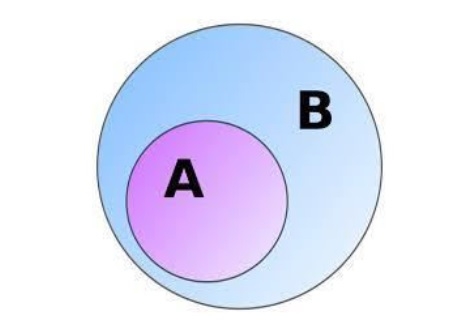
 Data Structure
Data Structure Networking
Networking RDBMS
RDBMS Operating System
Operating System Java
Java MS Excel
MS Excel iOS
iOS HTML
HTML CSS
CSS Android
Android Python
Python C Programming
C Programming C++
C++ C#
C# MongoDB
MongoDB MySQL
MySQL Javascript
Javascript PHP
PHP
- Selected Reading
- UPSC IAS Exams Notes
- Developer's Best Practices
- Questions and Answers
- Effective Resume Writing
- HR Interview Questions
- Computer Glossary
- Who is Who
issuperset() in Python
In this article, we will learn about issuperset() in Python and its implementation in various areas.
This method returns boolean True if all elements of a set B contains all elements set A which is passed as an argument and returns false if all elements of A not present in B.
This means if B is a superset of A then it
returns true; else False

Example
Let’s look at some example
A = {'t','u','t','o','r','i','a','l'}
B = {'t','u','t'}
print("A issuperset B : ", A.issuperset(B))
print("B issuperset A : ", B.issuperset(A))
Output
A issuperset B : True B issuperset A : False
Example
A = {'t','u','t','o','r','i','a','l'}
B = {'t','u','t'}
C = {'o','r','i','a','l'}
print("A issuperset B : ", A.issuperset(B))
print("B issuperset A : ", B.issuperset(A))
print("A issuperset C : ", A.issuperset(C))
print("B issuperset C : ", B.issuperset(C))
Output
A issuperset B : True B issuperset A : False A issuperset C : True B issuperset C : False
Conclusion
In this article, we learnt how to implement the issuperset() function in Python 3.x. Or earlier.

Advertisements